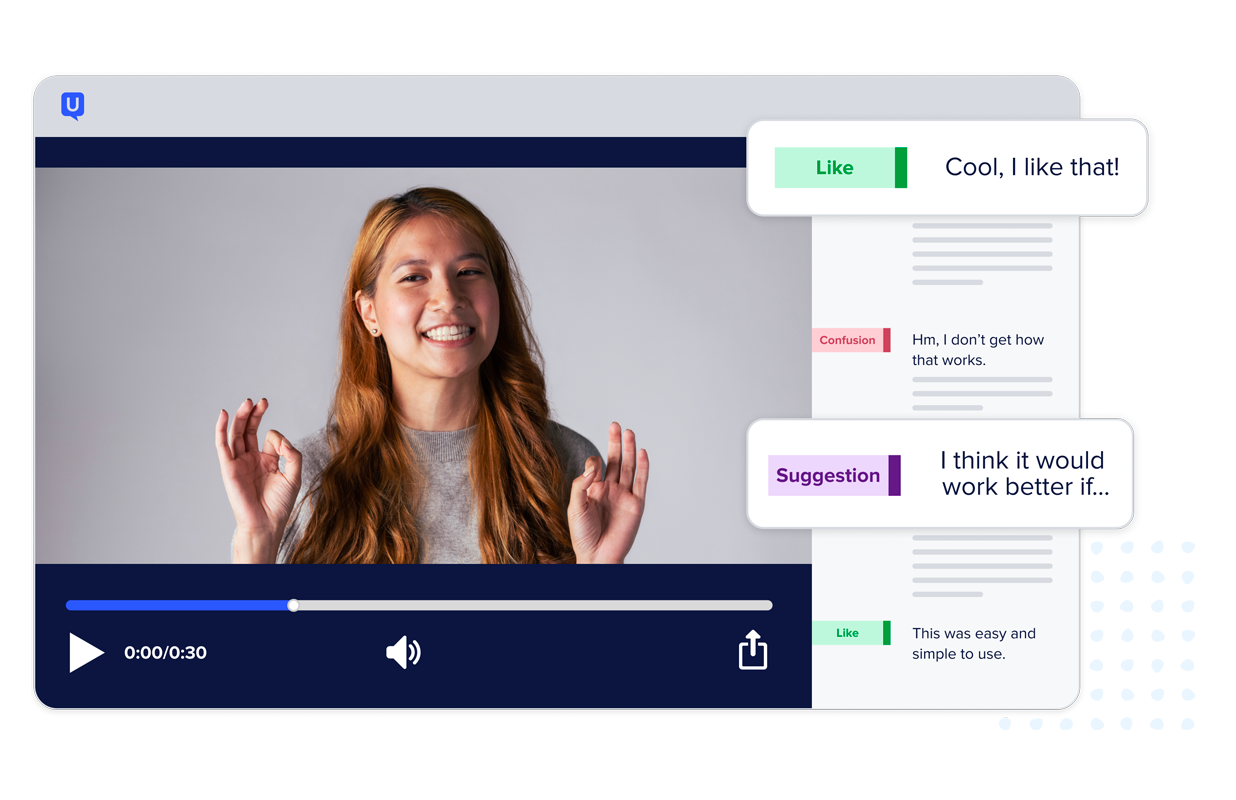
How to measure UX ROI and impact

UX teams often face the challenge of getting stakeholders excited about their findings and ensuring that the business understands the value of their output. With that said, there are many approaches to telling a story that truly speaks the language of your stakeholders.
From selecting the scope of research to the format of the reports themselves, creating a story that resonates requires a deep understanding of what the audience cares about and crafting a message that speaks to that focus. Down the road, it also becomes critical to connect tangible outcomes to findings and recommendations.
In this article, we’ll show you how your team can effectively tie together goals at any level—from strategic to tactical—so that you can measure the impact of your company’s activities that build empathy for your customers.
How to connect business goals to outcomes
Many UX teams do their work in a vacuum. A business stakeholder hands over a set of requirements, a design approach, a problem, or a research brief. The research team takes over, formulating objectives, studies, and executing to deliver results. These findings and recommendations are then handed back over to the business, and the conversation is finished.
Instead, teams and the business stakeholders with whom they partner must work collaboratively to connect critical business drivers to the research. The partnership must continue until the impact of the research is measurable against business goals.
While it's often difficult to tie back a single insight to a percentage change in a key metric, given the complexity of business and the macroeconomic climate, you can provide data that demonstrates customer experience ROI. By looking at a series of metrics and tracking the initiatives, insights, and activities, you can start to pick up the signal around whether or not customers are feeling that improvement,
Uncover the ROI of empathy: how it works
To connect value and impact through research, UX teams have to be intentional and organized about what they do, how, when, and why. This framework connects business goals to activities and impacts through research.
Essentially, we’re making intangible goals—like customer empathy—tangible by connecting concrete approaches to projects and metrics. Companies can then measure the success of a project or initiative by connecting the data to activities that drive value.
Let’s walk through an example
Let’s say that your company has a high-level mission of ‘keeping it simple’ for customers. This is a great way to project empathy. By ensuring that your customer touchpoints are straightforward and accessible, their perception will likely be that your company is easy to work with. This is your top-line goal.
To make progress on this goal, your company decides to undertake a series of initiatives. These are focused on making a connection to activities that different teams would either take on individually or collaboratively to optimize customer-facing touchpoints. A few examples might be “reduce the number of steps required to buy,” “improve the self-service experience,” or “right-channel the purchase process”.
The next step is to align projects with these initiatives. Continuing the example, let’s focus on “improve the self-service experience”. These days, many people prefer to avoid making a phone call to customer service, so they might use an online FAQ, chat, or online product community to resolve their issue. These touchpoints might be a focus for one or more projects to improve the experience.
If you take on a project that is focused on improving the FAQ experience, this is where things get interesting. Frequently, the design and maintenance of FAQ content require a significant cross-functional effort because the customer experience features pain points that might be driven by inefficiencies or touchpoints that are located across the company—warehouse, shipping, website, customer support center, etc.
This is the point when the business reaches out to the research team to collaborate on how to surface and resolve pain points. UX teams would run research to dig into one or more areas to identify and address the areas identified. One potential overall research objective would be “to understand and resolve the barriers customers face when trying to answer questions about products and services on our website.”
Associated with that objective, you might see some of the following studies:
- Content quality—learn whether the FAQ questions are the right ones and if the answers are sufficiently detailed and directive
- FAQ Accessibility—can customers easily find the FAQ? What access points should we consider?
- FAQ Concept Test—is the design approach that we are considering for the proposed redesign understandable? What can we do to optimize it?
Traditionally, UX teams focus on generating valuable insights for the business but stay out of the business activities stimulated from the learnings. However, the bottom line is that UX teams, in this model, would never step away from the project. Once they have conducted the studies and handed off results, they would want to understand what the business did to address those findings and what impact it had on the business.
To extend the example above, let’s say that some of the key findings relate to too much jargon, missing questions and answers, and a requirement that an email address is required to access FAQ content. Recommendations would be related to resolving these issues. The development and business teams would take on projects that would be related—generating new content by reviewing call center logs, removing the login wall, and creating a new FAQ information architecture.
Each of these projects is assigned an expected business result; before there is an investment in the work, the business prioritizes driving more traffic to the FAQ section and reducing calls to the call center. The metrics they would watch to determine whether the improvements have been effective would be related to those priorities. As a result, the business value would be increases and reductions in that traffic.
To tie it all together, this is how it would look:
The bottom line
This example starts with a really abstract goal, but in reality, you can do this same exercise with a variety of types of goals, from the abstract to very tactical. The key takeaway here is that you need to align on goals across the business, identify metrics that tie to those goals, and ensure that there is visibility into progress that’s trackable and tied to metrics.
In this way, you can demonstrate to your business stakeholders that the value of what you are doing is directly tied to the decision-making that supports making your customer experience better project authentic empathy.
By assuming the role of an advisor who is laser-focused not only on the quality of the research but also on the business value of the findings and recommendations the research team is producing, teams can help companies understand the value of their work and ROI of empathy.

Unlock your customer insight ROI
Discover the hidden ROI of your customers' insights. Book a meeting with our Sales team today to learn more.





